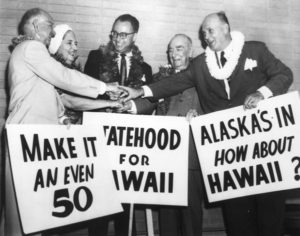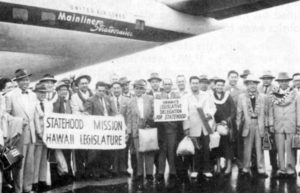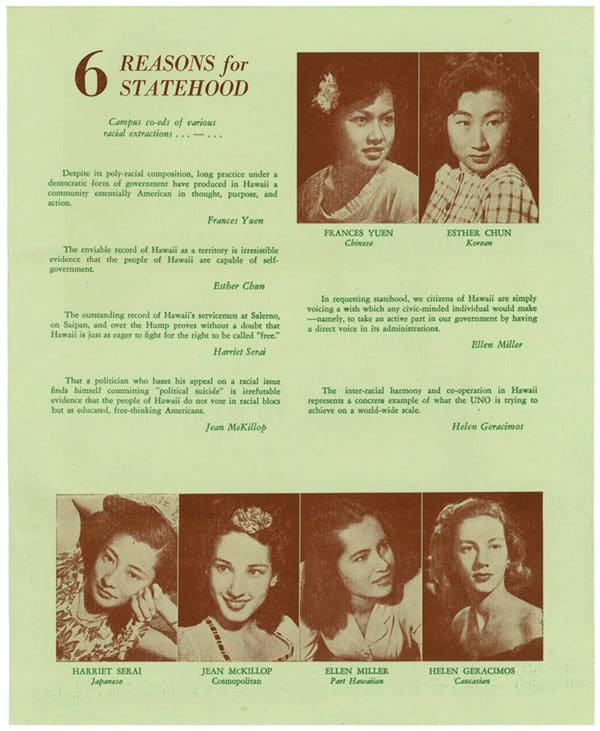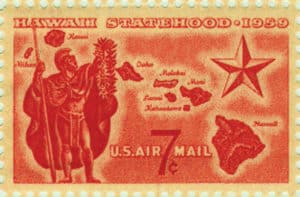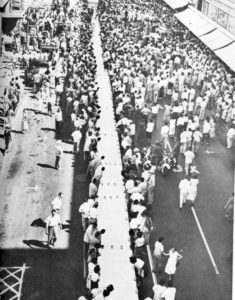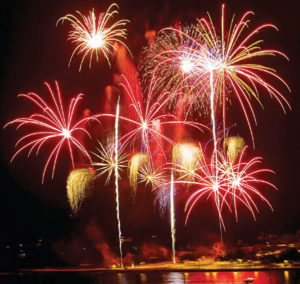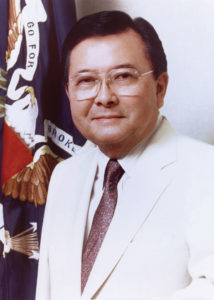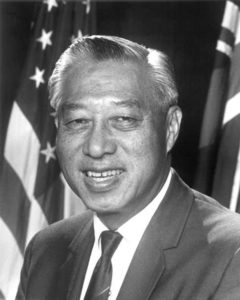The Fiftieth Star
Several times (1949, 1950, and 1953) the United States House of Representatives passed a statehood bill. Each time, it died in the Senate. In 1954, Hawai‘i and Alaska were linked together for statehood in a bill that passed the Senate but died in the House. Finally, in 1958, Hawai‘i looked on while Alaska became the forty-ninth state. With Alaska a state, all forces joined to bring Hawai‘i in as the fiftieth state. Had it not been for those who worked so hard, for the people themselves who proved their loyalty and patriotism, the cause for statehood would not have been so strong.
On March 12, 1959, Governor William Quinn telephoned from Washington, D.C., with the news. Sirens soon told the people of Honolulu that the Territory had become the fiftieth state. That night a huge bonfire was touched off on Sand Island in Honolulu Harbor. Fireworks zoomed into the air. It was a happy day for those who had worked for statehood, which was 94 percent of the voters in a large turnout.
On June 28, 1959, after trying for almost sixty years, Hawai‘i voted itself into the Union. On August 21, 1959, President Eisenhower officially declared Hawai‘i the fiftieth state, and the U.S. flag got its fiftieth star. This day has been celebrated as the Hawai‘i state holiday Admission Day ever since.
Statehood brought many expected changes. Citizens of Hawai‘i since 1898 became U.S. citizens. They voted for U.S. president and vice-president for the first time in 1960. Hawai‘i was permitted one representative in the House of Representatives and two senators in the Senate. In 1959, Daniel K. Inouye was elected the representative. Hiram L. Fong and Oren E. Long were elected the two senators. William F. Quinn became the first elected governor. Now the governor of the new state, not the president, appointed the judges, cabinet members, boards, and commissioners who would serve the new state government. The Hawaiian legislature had twenty-five state senators and fifty-one state representatives. Hawai‘i was given an equal state right to share in federal programs and grants.
Hawai‘i had gone through a long period of training for the transition to statehood and was eager and prepared. No other state could match it for the variety of ethnic groups living together. Hawai‘i knew it was the showcase of American democracy to millions, in Asia and the Pacific especially. Hawai‘i was ready to provide a blueprint for the country as the most multicultural democratic state.
